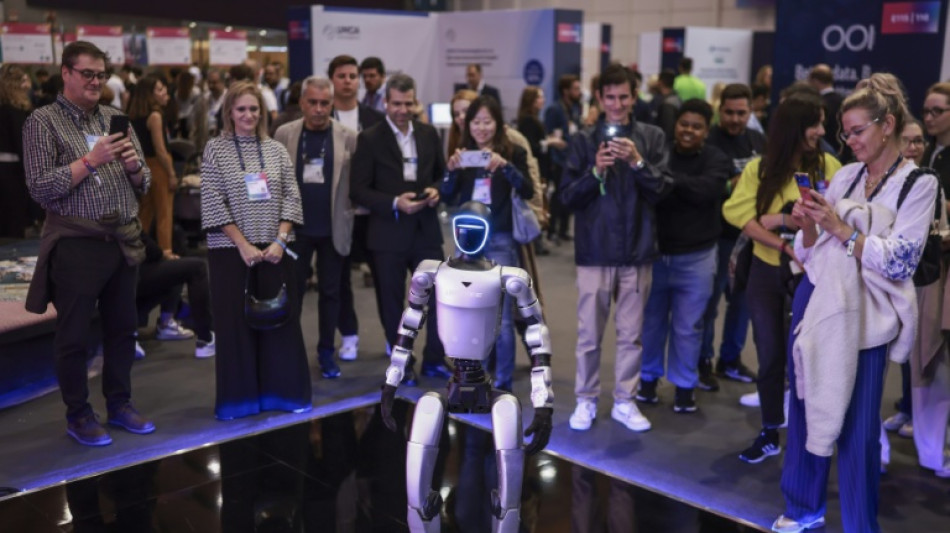

Amazon robotics lead casts doubt on eye-catching humanoids
Flashy humanoid robots that have awed attendees at Web Summit in Lisbon this week are still far from revolutionising physical labour in factories and warehouses, Amazon's chief roboticist told AFP.
"It's a bit of doing technology for technology's sake," Tye Brady said in a Wednesday interview.
"Whenever we think about robotics, we think about, A, what's the problem we're trying to solve? And, B, then function. From function, we derive form. And it kind of gets it backwards if you start with form."
Breakdancing androids from Chinese manufacturer Unitree were cited by Web Summit organiser Paddy Cosgrave as he declared that "the era of Western tech dominance is fading" on Monday.
Brady, by contrast, pointed to the more than one million robots already deployed by Amazon in its e-commerce operations.
These range from arms for picking and sorting items to wheeled haulers that carry heavy loads around warehouse spaces -- sensing and avoiding human workers as they go.
Amazon's fleet compares with around two million industrial robots in service across the whole Chinese economy in 2024 and more than 4.5 million worldwide, according to a September report from the International Federation of Robotics.
The company also boasts of the ecosystem and supply chain it has built up in Massachusetts for developing and building its robots within US borders.
Brady said that the world is still "in the early stages of robotics, of physical AI".
But "there is no such thing as 100 percent automation," he added, saying that Amazon's machines are designed "to provide utility and augmentation to people" and "eliminate the menial, the mundane, and the repetitive" from human work.
- Sense of touch -
Brady acknowledged that elements of the humanoid form might prove useful -- such as bipedal locomotion for "uneven terrain or the ability to go up and down stairs".
But as exciting as robots getting around on two legs may be, their value is determined by the tasks they are able to perform when they reach their destination.
"I can move to wherever... but once you get there, there's probably a task that you need to do. And that task is going to now involve some sort of sense of touch, some sort of manipulation," Brady said.
The rush to bring humanoid robots to market has led some firms to race ahead of the technology.
California startup 1X last month drew both excitement and derision by offering a home help android for pre-order at $20,000 -- including an "expert mode" operated remotely by a human for complex tasks.
Brady said that work is still needed before robots are able to interact with the whole range of objects they might encounter in the environment.
Announced earlier this year, Amazon's Vulcan robot -- which sports sensing technology allowing it to avoid damaging items it is gripping or nudging aside -- is able to pick and stow around 75 percent of items the giant web store offers.
But the system is for now a large floor-mounted assembly, rather than a lithe humanoid.
Looking to the future, "if you start to combine... aptitude in mobility and manipulation, and free yourself from form and focus more on the function, that's actually going to be really great," Brady said.
P.Smid--RTC



